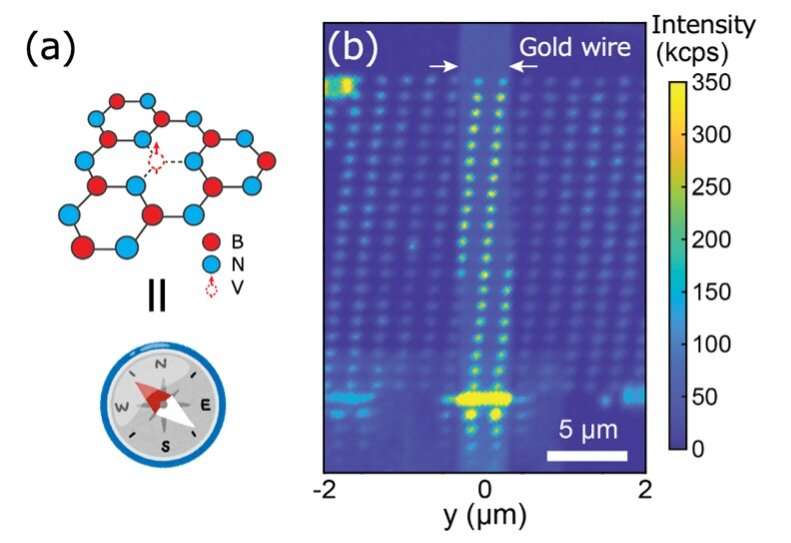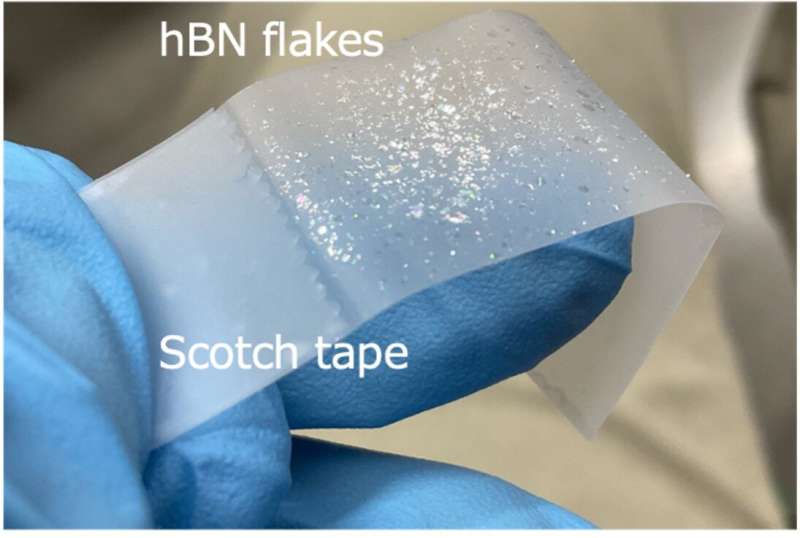This article has been reviewed according to Science X's editorial process and policies. Editors have highlighted the following attributes while ensuring the content's credibility:
fact-checked
peer-reviewed publication
trusted source
proofread
Researchers succeed in arranging nanoscale quantum sensors on desired targets

University of Tokyo scientists have achieved the delicate task of arranging quantum sensors at a nanoscale, allowing them to detect extremely small variations in magnetic fields. The high-resolution quantum sensors will have potential uses in quantum materials and electronic device research. For example, the sensors can help develop hard disks that use nano-magnetic materials as storage elements. This is the world's first successful high-resolution magnetic field imaging using a nanoscale arrangement of quantum sensors.
Sensors surround us in our daily life, from garage lights to smoke detectors and even atoms. Quantum sensors sense the environment around them using the properties of an atom. For example, an atom changes its spin, which takes two values like the poles of a magnet, in response to a magnetic field. Magnetic field sensors have many applications in biomedical appliances and quantum materials research, including superconductors.
Kento Sasaki, an Assistant Professor at the University of Tokyo, says, "Using such an unprecedented sensor, we want to observe a microscopic world that no one has ever seen."
The researchers wanted to develop stable quantum sensors placed near the targets such as wires and disks. But until now, it has been challenging to precisely arrange atoms to achieve the ability to sense minute variations in the magnetic field.
"Although individual quantum sensors are small, their spatial resolution is restricted by the distance between the sensor and the measurement target," says Sasaki. To solve the problem, the researchers established a technique for creating nano-sized quantum sensors on the surface of the measurement target.
As quantum sensors, the team used boron vacancies or lattice defects in the two-dimensional hexagonal boron nitride, a thin crystalline material with nitrogen and boron atoms. The boron vacancy defect is the new kid in the block since its discovery as a quantum spin sensor in 2020.
Pulling the Scotch tape off the crystal, the team obtained a thin hexagonal boron nitride film. The researchers attached the thin film to the target gold wire. Then they bombarded the film with a high-speed helium ion beam, thus popping boron atoms out and forming the boron vacancy spots of 100 nm2.
Each spot contains many atom-sized vacancies which behave like tiny magnetic needles. The closer the spots are to each other, the better the spatial resolution of the sensors. As current flowed through the wire, the team measured the magnetic field at each spot based on the intensity of light emitted from the spots in the presence of microwaves. The researchers were amazed when the measured values of the magnetic field matched closely with the simulated values, proving the efficacy of the high-resolution quantum sensors.
The change in the spin state of the sensor in the presence of a magnetic field can be detected even at room temperature, thus enabling easy detection of the local magnetic field and currents. Moreover, the boron nitride nanofilms attach to objects just by van der Waals force, which means the quantum sensors easily stick to different materials.

Sasaki and his team plan to apply this technique for research on condensed matter physics and quantum materials. "It will enable direct detection of the magnetic field from, for example, peculiar states at edges of graphene and microscopic quantum dots," adds Sasaki.
Atom-sized quantum sensors are starting to revolutionize how we sense microscopic environments and thus also understand macroscopic properties. Their applications run beyond basic science research. They can help image human brains, accurately geolocate, map underground environments, and detect tectonic shifts and volcanic eruptions. Sasaki and his team await the potential uses of their nanoscale quantum sensors in semiconductors, magnetic materials, and superconductors.
The study is published in the journal Applied Physics Letters.
More information: Kento Sasaki et al, Magnetic field imaging by hBN quantum sensor nanoarray, Applied Physics Letters (2023). DOI: 10.1063/5.0147072
Journal information: Applied Physics Letters
Provided by University of Tokyo





















